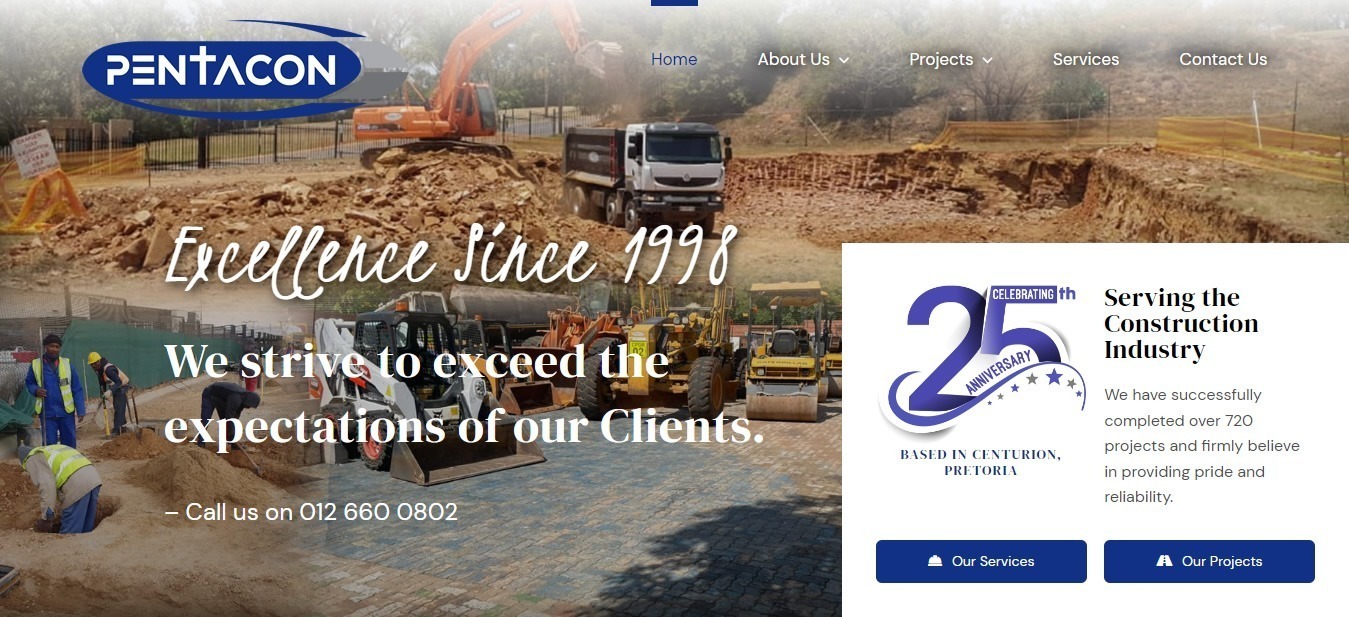Raise Your Brand with Expert Web Design Pretoria Solutions
Raise Your Brand with Expert Web Design Pretoria Solutions
Blog Article
Best Practices for Producing User-Friendly Website Design
In the ever-evolving landscape of internet layout, establishing a straightforward interface is critical for involving audiences and driving conversions. Trick techniques such as simplifying navigation, enhancing for mobile phones, and boosting filling rate play an essential duty in this process. Furthermore, the value of regular layout components and focusing on accessibility can not be overstated. As we explore these fundamental concepts, it comes to be clear that reliable customer experience layout not just fulfills user expectations however likewise sets the stage for much deeper involvement. Discovering the nuances of each practice can lead to significant improvements in total internet effectiveness.
Simplify Navigating
A streamlined navigation system is essential for enhancing user experience on any internet site. Efficient navigating permits individuals to discover the information they seek swiftly and effortlessly, thus minimizing stress and increasing the probability of interaction. A clear layout that categorizes content rationally is extremely important; users need to with ease comprehend where to click for particular information.
Employing a basic high-level navigating bar, enhanced by drop-down menus for subcategories, help in maintaining an organized framework. It is vital to limit the number of primary navigating web links to avoid frustrating customers; generally, five to 7 choices are ideal. In addition, employing detailed tags enhances clarity, making it possible for users to discern the material of each area at a glance.
Including a search feature additionally improves the navigation experience, particularly for content-rich web sites. This attribute encourages individuals to bypass conventional navigating courses when trying to find details information. Consistent design elements across all pages strengthen familiarity, allowing customers to browse with self-confidence.
Maximize for Mobile

Firstly, embrace a responsive style method that instantly changes the format and material based upon the screen size. This flexibility ensures that users have a regular experience across devices. Next, focus on touch-friendly interfaces by making certain web links and switches are quickly clickable, decreasing the need for zooming.
In addition, consider the importance of concise material discussion. Mobile users often look for fast info, so using techniques like retractable menus or accordions can enhance usability without frustrating the individual. Furthermore, ensure that font styles are readable, and picture sizes are maximized for faster loading.
Last but not least, examination your web site on different mobile tools and running systems to determine prospective issues. By dealing with these components, you will create an instinctive mobile experience that keeps customers engaged and motivates them to discover your offerings additionally - Web Design Pretoria. Prioritizing mobile optimization is essential for achieving an easy to use website design in an increasingly mobile-centric world
Enhance Loading Speed
Filling rate is a crucial factor that can significantly affect user contentment and involvement on a site. Studies show that users expect pages to load like it in 2 seconds or much less; past this threshold, the likelihood of desertion increases significantly. Maximizing packing speed is vital for preserving visitors and enhancing general site efficiency.
To enhance packing speed, numerous best methods must be carried out. First, enhance pictures by compressing them without giving up high quality, which can considerably decrease data dimensions. In addition, utilize web browser caching to keep copies of documents locally, allowing faster lots times for returning visitors. Minifying CSS, JavaScript, and HTML files can also assist by removing unnecessary personalities and spaces, consequently decreasing the quantity of code that needs to be refined.

Use Regular Style Components
Developing a natural aesthetic identity is essential for boosting user experience on a website. Constant design components, including color pattern, typography, buttons, and format structures, develop a unified look that assists individuals browse effortlessly. When individuals run into acquainted patterns and styles, their cognitive tons is decreased, allowing them to concentrate on content rather than understanding differing design facets.
Using a standardized shade combination reinforces brand recognition and cultivates an emotional link with individuals. In a similar way, maintaining consistent typography-- such as font designs, dimensions, and weights-- makes sure readability and adds to a sleek look. In addition, consistent button styles and interactive components assist users intuitively through the website, improving use.
Moreover, a cohesive design aids develop an arranged flow of details, making it easier for individuals to digest and find material. Each web page should show the same design principles to stop confusion and disorientation.
Prioritize Availability
A natural visual identification not just enhances navigation yet additionally establishes the stage for prioritizing ease of access in internet style. Ease of access makes certain that all customers, including those with specials needs, can browse and communicate with an internet site efficiently. To achieve this, internet designers should stick to established guidelines, such as the Internet Web Content Ease Of Access Standards (WCAG)
Carrying out features like alt text for photos, key-board navigability, and ideal shade contrast can considerably boost the customer experience for individuals with aesthetic, acoustic, or cognitive impairments. It is important to make use of semantic HTML to framework web content practically, enabling assistive technologies to share and analyze details precisely to individuals.
Furthermore, offering numerous ways of interaction-- such as text options for sound and aesthetic web content-- can cater to diverse user demands. Routine use testing with individuals who view it have specials needs can discover possible barriers that may not be quickly evident throughout the design stage.
Ultimately, prioritizing availability not only adheres to lawful criteria yet likewise broadens the potential target market, fosters inclusivity, and improves general website use (Web Design Pretoria). By installing ease of access into the layout procedure, developers can create a more equitable electronic landscape for every person
Conclusion

As we check out these fundamental concepts, it ends up being resource clear that efficient user experience layout not only meets user assumptions yet additionally establishes the phase for much deeper involvement. Mobile users frequently seek fast information, so utilizing methods like collapsible menus or accordions can boost functionality without frustrating the individual. When users experience familiar patterns and styles, their cognitive lots is decreased, enabling them to concentrate on web content rather than figuring out differing style elements.
In recap, applying best methods for easy to use web layout substantially improves the general user experience. Adhering to these guidelines fosters a positive connection between customers and electronic platforms, inevitably promoting individual contentment and retention.
Report this page